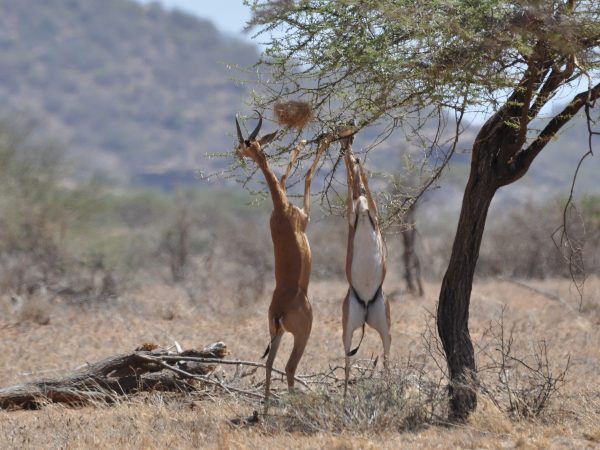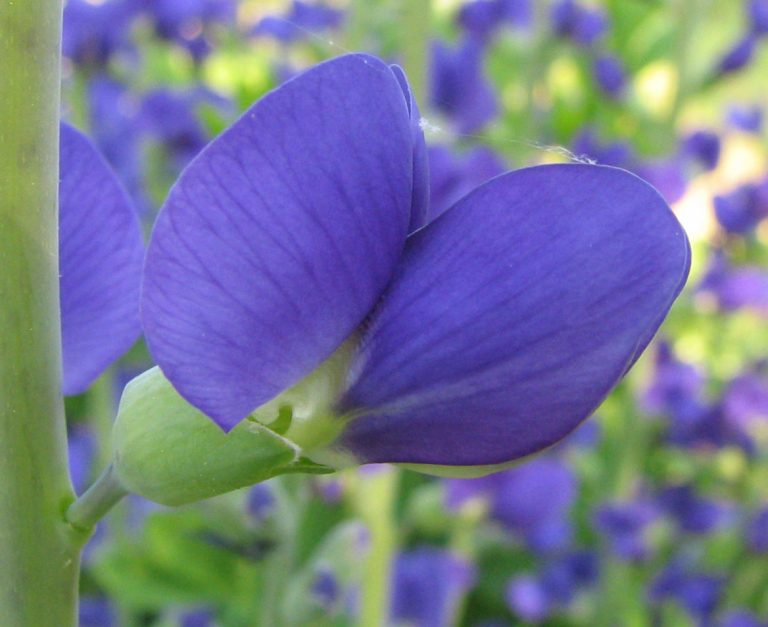Imagine living without water, one of the most basic necessities of life. In the wild, many animals do have ways to cope with a lack of hydration, but even a camel cannot survive without needing to fill up now and then.
There is one type of antelope in the arid lands of Africa, however, that has adapted to life without any water.
Long-necked antelope
The gerenuk, which means “giraffe-necked” in Somalian, is mainly found in Somalia, Kenya and southern Djibouti.
Aptly named for its long neck, this antelope can grow to around 150 centimeters tall. Gerenuks are able to reach great heights by standing up straight on their already long legs, allowing them to reach tasty vegetation six to eight feet off the ground.
Gerenuks live in small groups, consisting mainly of related females and their young, while males tend to live alone, or in small bachelor groups.
Success
You are now signed up for our newsletter
Success
Check your email to complete sign up
Its large eyes and ears give the gerenuk an endearing appearance, as it makes use of its eyelashes and sensory hairs on its snout to safely graze through thorny bushes while it eats.

No water, no problem
So, how does this unusual animal survive without water?
Gerenuks eat a lot of vegetation every day. Their huge appetite for fresh leaves, shoots, flowers and fruits gives them enough moisture to survive.
Gerenuks have various ways to conserve moisture, as well: a sedentary lifestyle, highly concentrated urine, and unique nasal passages, which are adapted to prevent evaporative loss.
Due to their ability to live without water, gerenuks can live in dry and arid lands, where a lack of proper water sources also means fewer predators and reduced competition with other herbivores that need to drink.
Danger from humans
While the gerenuk has adapted to be a survivor of harsh conditions, it faces other threats. Aside from the usual African predators, habitat loss and fragmentation loom against them, as humans expand into their lands.
With only about 95,000 gerenuks in the wild, they are classified as “Near-Threatened.” Conservationist groups are working to keep this from being elevated to “Endangered” status.
One such group, the Sheldrick Wildlife Trust, rescued an orphaned gerenuk calf in 2013. The little antelope was named Nuk, and was cared for at the Trust’s Kaluku field headquarters. He lived and socialized with a herd of impalas, but when he started growing horns and got too close with the females, the males began to chase him off and he moved back into the wild.
The Trust is optimistic that Nuk will enjoy a bright future and have a family of his own.
“It seems he’s having a ball of a time and perhaps established his own territory,” said Amie Alden, communications and media manager of the Trust, as reported by The Dodo. “Though it’s bittersweet not to see him, we are proud that he’s clearly found his place in the wild. A complete success story.”
Animals in their natural habitat can be incredibly ingenious and adaptive, but they are helpless against mankind. If we can take a step back, and curb our selfish impulses, there is much we can gain from observing nature. From animals like the gerenuk we can learn resilience and endurance, qualities likely to be highly useful in this changing world.







